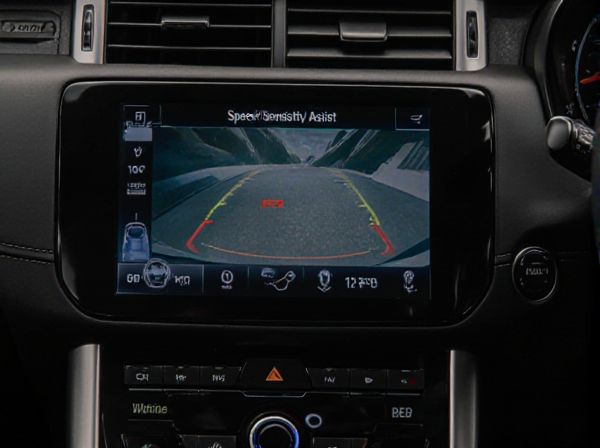
Photo illustration: Speed-Sensitive Assist vs Constant Assist
Speed-sensitive assist adjusts the level of power steering based on your vehicle's speed, providing lighter steering at low speeds for easier maneuvering and firmer steering at higher speeds for better control. Constant assist offers a uniform amount of power assistance regardless of speed, which can feel less responsive in varying driving conditions. Choosing speed-sensitive assist enhances driving comfort and precision by adapting to your steering needs dynamically.
Table of Comparison
| Feature | Speed-Sensitive Assist | Constant Assist |
|---|---|---|
| Steering Effort | Varies with vehicle speed; lighter at low speeds, firmer at high speeds | Consistent steering effort regardless of speed |
| Driver Control | Enhanced control during highway driving | Uniform control feel across all speeds |
| Fuel Efficiency | Improved due to variable power assist | Potentially lower efficiency due to constant assist load |
| Comfort | Increased comfort in low-speed maneuvers like parking | Comfort level remains steady at all speeds |
| Technology Complexity | More complex; requires speed sensors and adaptive controls | Simpler design with fixed assist parameters |
| Typical Use | Modern vehicles emphasizing efficiency and safety | Older models or basic steering systems |
Introduction to Steering Assist Technologies
Speed-sensitive assist adjusts steering effort based on vehicle speed, providing lighter steering at low speeds for easier maneuvers and firmer feedback at higher speeds to enhance control and stability. Constant assist delivers a uniform steering effort regardless of speed, offering predictable handling but potentially reducing comfort during slow-speed operations. These steering assist technologies optimize driver experience by balancing effort responsiveness with vehicle dynamics for enhanced safety and comfort.
Defining Speed-Sensitive Assist
Speed-Sensitive Assist is an advanced steering technology that adjusts the level of power assist based on vehicle speed, providing lighter steering effort at low speeds and increased stability at high speeds. Unlike Constant Assist systems, which deliver uniform steering assistance regardless of speed, speed-sensitive systems enhance maneuverability during parking and low-speed driving while offering precise control during highway travel. This adaptive approach improves overall driving comfort and safety by optimizing responsiveness according to dynamic driving conditions.
Understanding Constant Assist
Constant assist systems provide a steady level of support regardless of the user's speed, ensuring consistent power output during cycling. Unlike speed-sensitive assist that adjusts power based on velocity, constant assist is ideal for riders seeking predictable and reliable performance in various conditions. This mode simplifies control and minimizes fluctuations, enhancing stability and rider confidence.
Key Differences Between the Two Systems
Speed-sensitive assist systems adjust the level of steering or braking assistance based on vehicle speed, providing lighter effort at low speeds and firmer control at high speeds for enhanced safety and comfort. Constant assist systems maintain a uniform level of assistance regardless of speed, offering predictable but less adaptive responsiveness. The key difference lies in the dynamic modulation of support that speed-sensitive assist offers, improving maneuverability in urban settings and stability on highways.
Advantages of Speed-Sensitive Assist
Speed-sensitive assist systems adjust the level of steering effort based on vehicle speed, providing lighter steering at low speeds for easier maneuvering and firmer response at higher speeds for improved control and stability. This dynamic adjustment enhances driving comfort and safety by reducing driver fatigue during city driving while maintaining precise handling on highways. Speed-sensitive assist also contributes to better fuel efficiency by optimizing power consumption compared to constant assist systems that apply uniform assistance regardless of speed.
Pros and Cons of Constant Assist
Constant Assist provides consistent power regardless of the rider's speed, ensuring predictable and reliable support on flat terrain and at low speeds. However, this mode can lead to quicker battery depletion due to continuous motor engagement, which may reduce overall range. Riders may also experience less natural riding dynamics, as the assistance does not adapt to variations in speed or pedaling effort.
Impact on Driving Experience and Safety
Speed-sensitive power steering adjusts the level of assist based on vehicle speed, providing lighter steering at low speeds for easier maneuverability and firmer control at high speeds to enhance stability and precision. Constant assist systems deliver uniform steering effort regardless of speed, which can result in less nuanced feedback and potentially reduced driver confidence during fast maneuvers or parking. The dynamic nature of speed-sensitive assist improves overall driving experience by tailoring responsiveness to driving conditions, thereby increasing safety through better vehicle control and reduced driver fatigue.
Common Applications in Modern Vehicles
Speed-sensitive assist systems adjust steering effort based on vehicle speed, improving maneuverability at low speeds and stability at high speeds, commonly found in passenger cars and SUVs for enhanced urban driving and highway cruising. Constant assist systems provide uniform steering assistance regardless of speed, typically utilized in commercial vehicles and older model cars where consistent steering feel is prioritized. Modern vehicles increasingly favor speed-sensitive assist due to its adaptive benefits, aiding in tight parking scenarios and high-speed lane keeping for improved driver comfort and safety.
Maintenance and Reliability Considerations
Speed-sensitive assist systems require regular calibration and sensor maintenance to ensure precise responsiveness, while constant assist systems typically demand less frequent adjustments due to their uniform support mechanism. Reliability in speed-sensitive assist depends heavily on electronic components and software integrity, which may be prone to wear or sensor failures over time. In contrast, constant assist systems, with their simpler mechanical design, often exhibit greater durability and lower maintenance costs, making them preferable for applications prioritizing long-term reliability.
Choosing the Right Steering Assist for Your Needs
Speed-sensitive assist adjusts steering assistance based on vehicle speed, providing lighter steering at low speeds for easier maneuvering and firmer control at higher speeds to enhance stability. Constant assist offers uniform steering support regardless of speed, ensuring consistent feedback and simplicity in handling. Selecting the right steering assist depends on driving conditions and preferences, with speed-sensitive assist benefiting city driving and constant assist favoring steady highway cruising.
 caratoz.com
caratoz.com